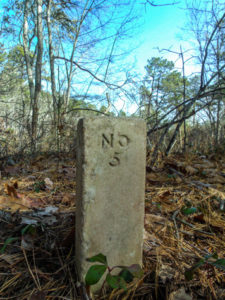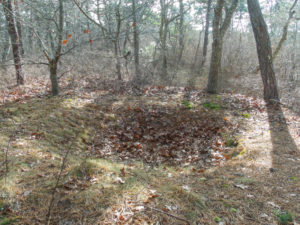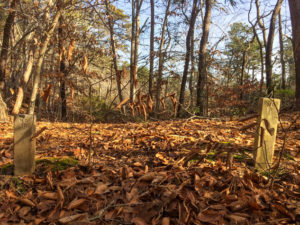Smallpox was one of the deadliest diseases ever known to mankind. Its roots were traced back as far as the 3rd Century BC in the Middle East. It included fever and vomiting with the development of painful, fluid-filled sores which typically would scab over. Though not a death sentence the mortality rate with smallpox was 30% according to the Center for Disease Control, mortality rates were higher of this contagious illness among children. A vaccination was first discovered in 1798 by British physician Edward Jenner. Despite this the disease would continue to ravage the world before ultimately being eradicated. The last case of smallpox was diagnosed in October 1977 with the ailment being declared wiped out in 1980.
Long before the victory over smallpox countless millions of people worldwide died from the disease. It impacted every area of the world including Cape Cod. There is the legend of Mr. Thomas Ridley, a man who contracted smallpox in the 1770’s in Provincetown and was buried alone deep in the woods of Truro behind what is now Montano’s Restaurant on Rt. 6. Then there is Thomas Freeman, a skilled physician who contracted and died of the virus in 1766 and was buried in a solo grave in a field near his property along the Orleans-Chatham town line. Dr. Samuel Lord, who battle smallpox alongside Freeman during that time also died of the disease and is buried in a grave which sits precariously close to the busy Training Field Road in Harwich. There is even an isolated smallpox cemetery in Chatham along Old Comers Rd. in a conservation area. With all of these connections to smallpox on Cape Cod there may be none more somber than the smallpox cemetery in Provincetown.
Located only a couple hundred yards north of Route 6 in Provincetown, near Shank Painter Road, this cemetery is obscured and overgrown, hardly befitting one’s final resting place. However the fear of smallpox is what led to such a sad ending. The stones, no more than eighteen inches tall, hide in the nook between a rather steep hillside and the wetland area surrounding Duck Pond. The stones are numbered, no names, and when the last person was laid to rest here they numbered fourteen.
The story and history of this final resting place can be traced back 150 years. During the times when smallpox was still a formidable disease a small 8×10-foot treatment building called the pestilence house, or Pest House, was built a few hundred yards north of present day Route 6 around 1848. It was meant to keep those infected safely away from the rest of the town. Shortly thereafter a vaccination for smallpox was developed but not routinely used due to the fear over effects from such a vaccination. By 1873 Dr. Horatio G. Newton, a consultant to the Provincetown Board of Health, had felt the disease was eradicated in the town due to stricter isolation and vaccination rules.
Unfortunately in the time in between many in the town died during outbreaks. From 1855-1873 fourteen people died of smallpox at the Pest House. Each of the people who died was buried with a numbered stone, perhaps to spare their families backlash from other townspeople. The Pest House was removed shortly after the final death in 1873, though a large hole remains at the head of the graves. As the smallpox disease became a thing of the past during the early 20th century the small cemetery became overgrown, forgotten, and the majority of the stones were damaged. As of today only four stones remain in good condition Numbers 5, 6, 9, and 10. Sadly the names of those buried seemed to have vanished with time as well, leaving them as unknowns.
The legend of the cemetery grew throughout the 20th century and finally the poor souls buried in the woods would regain their names. In 1980 the book Provincetown, Massachusetts, Cemetery Inscriptions was written by author Lurana Higgins Cook. Thanks to her research a further light was shined on those buried in the cemetery. Their names in order of stones are: #1 Adam Dyer, #2 John Roberts, #3 Monson W. Barnard, #4 Elizabeth Hill, #5 Kennis Fergerson, #6 Antone Domingo, #7 Mary Rogers, #8 George G. Hallett, #9 Tamsin Manuel, #10 Frank Sofrine, #11 Manuel Terceira, #12 William H. Butler, #13 John McDonald and #14 Thomas Basell.
In 2015 a simple granite marker was unveiled at the Winthrop Street Cemetery in Provincetown commemorating those who rest in the small cemetery off of Route 6. Smallpox may have been wiped out nearly four decades ago but its connection to Cape Cod history is lasting. Whether it’s a stop at the new granite marker, a hike out to the hidden grave of Thomas Ridley, or traversing the hills and brush to visit the tiny smallpox cemetery, it is important to remember those who perished in the past of a terrible, and thankfully eradicated, illness.
By Christopher Setterlund



























